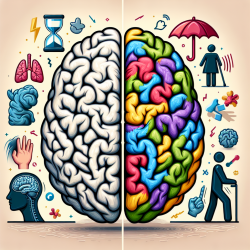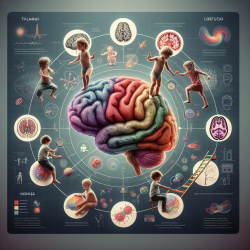Exploring the Role of Brain Hemispheric Asymmetry in Neurodegenerative Diseases
As a speech-language pathologist, understanding the intricacies of brain function is crucial, especially when it comes to the lateralization of brain hemispheres. The recent research article titled The enigma and implications of brain hemispheric asymmetry in neurodegenerative diseases provides valuable insights into how brain asymmetry could influence the pathogenesis and progression of neurodegenerative diseases. This blog aims to explore these findings and discuss how they can be applied to improve therapeutic outcomes for children and adults alike.
Understanding Brain Hemispheric Asymmetry
Brain asymmetry refers to the functional and structural differences between the left and right hemispheres of the brain. This asymmetry is a well-documented phenomenon in both healthy and diseased brains. In the context of neurodegenerative diseases, such as Parkinson's disease, Alzheimer's disease, amyotrophic lateral sclerosis (ALS), and multiple sclerosis (MS), asymmetry manifests in both the pathology and clinical symptoms.
Key Findings from the Research
- Parkinson's Disease: The research highlights the unilateral onset of motor symptoms, often starting on one side of the body. This asymmetry is linked to the loss of dopaminergic neurons in the substantia nigra, contralateral to the side of symptom onset.
- Alzheimer's Disease: Asymmetry in Alzheimer's disease is observed in the form of faster grey matter atrophy in the left hemisphere, correlating with language impairments and other cognitive deficits.
- ALS and MS: Both diseases exhibit asymmetrical symptom onset, with ALS showing unilateral limb weakness and MS presenting with asymmetric lesion distribution.
Implications for Practitioners
For practitioners, understanding these asymmetries is vital for diagnosis and treatment planning. Here are some ways to implement these findings:
- Early Detection: Recognizing asymmetrical symptoms can aid in early diagnosis, allowing for timely intervention and potentially slowing disease progression.
- Targeted Therapies: Therapies can be tailored to address the specific hemisphere affected, improving outcomes for patients.
- Further Research: Encouraging further research into the genetic and epigenetic factors contributing to brain asymmetry could lead to breakthroughs in understanding disease mechanisms and developing new treatments.
Conclusion
Incorporating the insights from this research into clinical practice can enhance the effectiveness of interventions for neurodegenerative diseases. By understanding the role of brain hemispheric asymmetry, practitioners can develop more personalized and effective treatment plans.
To read the original research paper, please follow this link: The enigma and implications of brain hemispheric asymmetry in neurodegenerative diseases.










